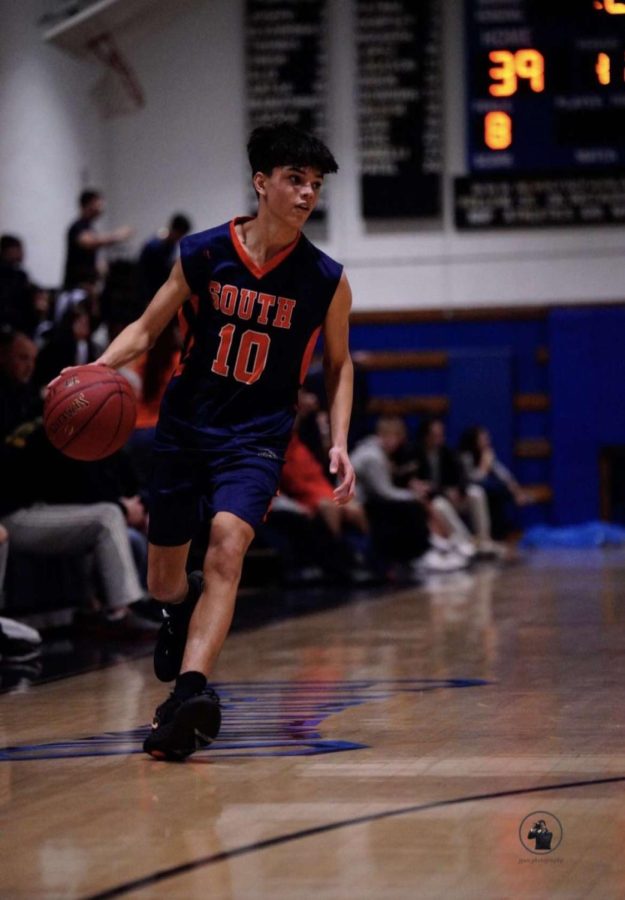By Louie Chung
As the world slowly recovers from the effects of the COVID-19 pandemic, we students are shut inside our homes, passing the time watching whatever is on our YouTube Recommended page. However, the novelties of Dude Perfect and short clips of Marvel movies can only temporarily stave off the insatiable desire for entertainment. Enter Alfred Hitchcock. As a legend in the film industry, he has not only directed countless Oscar-winning feature films, he has also revolutionized the visual aesthetic of cinema with his unique film style and distinct tone. So over this quarantine, I have challenged myself to attempt to rank his many critically acclaimed movies.
Disclaimer: If I rank your favorite Hitchcock movie low, that does not mean that it’s a bad movie. This is just my personal preference.
8. The Man Who Knew Too Much
An American family is on holiday is on holiday in Morocco and accidentally stumbles across the assassination of a spy that kickstarts an investigation/chase plot that is very enjoyable to see. A classic Hitchcock film in which a normal family gets involved in something much bigger than themselves and they have to try and navigate through it as best as possible. There is room for various emotions to be at play in this kind of story, and Hitchcock is at his best, tugging at the heartstrings of viewers with his captivating camerawork, ambitious directing and tantalizing score. There is no particular reason for why I ranked this movie last; instead, this movie serves as a testament to the legendary career of Alfred Hitchcock. Such an enjoyable film like this is ranked last in his greatest movies of all time and only because there are just better movies in front of it. End of story.
7. Shadow of a Doubt
Wow, I know what you’re thinking: This is Hitchcock’s own personal favorite. How can this be at 7? The movie is great, and the plot’s concept is engaging and fun: a murderous, yet charismatic uncle hides out in his sister’s house with a suspecting niece. Hitchcock makes use of this creative storyline well, constructing stunning visuals to give any competing movie a run for its money. His iconic use of staircases to convey so many feelings along with the placement of long, stretching shadows that served to heighten the emotions on screen creates a Hitchcock style of cinematography that I will never grow tired of. The dynamic between the uncle and niece worked excellently for the movie’s purpose, with the innocent, dainty expressions of Teresa Wright and the quiet intensity of Joseph Cotton. However, despite all of the things Hitchcock executed masterfully, the climax was not his best work, in my opinion. It felt rushed and as a result, the movie did not reach its potential.
6. The 39 Steps
This movie was a classic wrong-man storyline in which a charismatic man named Richard Hannay wrongfully gets framed for the murder of a spy that ropes him into the espionage world where he must stop the real criminal in order to clear his name. This, by itself, is enough to hook my interests to tune in on a lazy afternoon. However, the cherry on top was the wildly entertaining dynamic between Hannay and the indignant blonde where hatred turns to tolerance and eventually romance. A whirlwind of humor and enjoyment erupted from this situation, only enhanced by the witty dialogue between the two. A lack of background music dominated this film, not completely, but it was unlike other films done by the director where the score is one of his key characteristics. I was not opposed to this decision because the silence that it gave to scenes actually increased the tension just as effectively. Although not the most thought-provoking film, this is a great movie for a slow day in need of some entertainment.
5. Vertigo
“Not who done it, but who cares.” This was a review by Novak and Stewart when the movie first came out. As you can see, it was not met with the warmest reception. And they have a point: the plot is far-fetched and complicated, and the pacing is inconsistent and mind-bogglingly slow at times. The plot is not a half-baked effort at complexity; there are just moments when it’s hard to follow. So why is it so ranked so high on this list? Well, Vertigo is cinema at its finest; it is living proof that film is art, inspiring future directors to try and achieve a ‘Vertigo state of aesthetic.’ Every shot is meticulously calculated and positioned in a way that exactly achieved the director’s vision and that attention to detail is so evident to the viewers. As is a common theme in all of Hitchcock’s movies, the score is one of the film’s best attributes. It doesn’t just enhance the scene—it is essential to it; the music conveys what words cannot. So if you have time to spare and you’re prepared to digest a complex movie plot for two hours and 6 minutes, then Vertigo is the one for you. It has such stunning visuals that you’ll probably be too enamored with the beauty of cinematography done right to focus on the plot anyways.
4. North by Northwest
North by Northwest is the ultimate argument-ending movie. It has a little something for everyone: a quippy love story for the parents, an action-adventure thriller jam-packed with guns and explosions for the kids, with brilliant suspense and mystery sprinkled throughout. With a plot similar to The 39 Steps, a cushy New York businessman is mistaken for a government agent by a group of spies and chased across the nation, looking for ways to survive. No one would ever peg Hitchcock’s movies as realistic as the plots are normally crazy and bizarre, but Hitchcock earns his money through his realistic directing. His characters often have believable motivations, and no twist is left unearned or misused. This was the first non black and white Hitchcock film for me, and I was shocked at the beautiful aesthetics of this motion picture, the heavy saturation and stunning backdrops really did a number on me. One cannot mention this film without its outstanding score, a lively percussion-dominated orchestration from Bernard Herrmann that ramped up the tension to “palpable” status. However, despite an electrifying climax that leaves the audience on the absolute threads of the edges of the seat, the ending was as abrupt as the 7:00 alarm on a Monday morning. It didn’t give the audience enough time to breathe and comprehend the awesomeness of this film, but no movie is perfect, and I think I speak for everyone that this does not take too much away from the overall cinema experience.
3. Dial M for Murder
I loved this movie for its Sherlock Holmes-esque feel and the constant flow of thrill injected into every scene. The main premise was centered around the seemingly perfect murder of a husband’s wife and the spiraling implications when the attempted murder fails. The carefully crafted suspense is such a joy to experience when the perfect crime unravels and the husband must scramble to trick the police. Hitchcock’s attention to detail is on full display here, each little clue serving its own purpose in the grand scheme. The majority of this film was shot in the interior of the husband’s home; however, this did not hinder the entertainment aspect as Hitchcock maximized the potential of the singular set with a variety of shots that prevented any claustrophobic sensations of the viewer. Although some people consider this production to be second-rate Hitchcock, I really enjoyed this movie, but I’m a sucker for a good crime mystery film.
2. Rear Window
One of Hitchcock’s most iconic productions to date, a masterpiece one just does not tire of watching. Hitchcock wastes no time in setting the stage for the whole movie in the opening scene. We get to know Jimmy Stewart’s character in the first five minutes; L.B. Jefferies is a bedridden photographer whose ambition put him in a wheelchair temporarily. This is done without any need for exposition. Hitchcock manipulates the audience by taking note of the unusual predicament of Jefferies, placing the viewers inside the perspective of this trapped man in a wheelchair. The protagonist is stuck with us, and we are limited to his own observations and thoughts. This provides an interesting dynamic between the audience and the main character where we are taken into the eyes of the protagonist for the majority of the film, influenced by his thoughts and beliefs. Now place a murder mystery in the mix and Hitchcock has the recipe for a grand suspence cake that he will carefully construct for the entirety of the movie. I love this movie because although it is a mystery thriller, it’s done in such a fresh and unique way that I can’t help but be amazed at the genius of Hitchcock.
1. Psycho
A movie that not only gave me nightmares but also left me with a sense of adoration to the directing style of Hitchcock. At first, this movie seems like one of Hitchcock’s runaway films, as a young, unhappy woman embezzles $40,000 and takes off, avoiding trouble until she lands at the Bates Motel. However, this film’s tone is quite different from its peers, North by Northwest or The 39 Steps. There’s another layer of emotional and visual foreboding that unsettles the audience, evident in the very first scene. Hitchcock masterfully raises the suspense with every shot, using his legendary technique of close-ups and voyeuristic angles, with the help of the unsettling and sensational score headed by Bernard Herrmann, see the iconic shower scene for evidence of Hitchcock’s brilliance. The acting by Anthony Perkins in this film is absolutely phenomenal, his creepy smile and monologue at the end of the movie will haunt your nightmares for sure.


